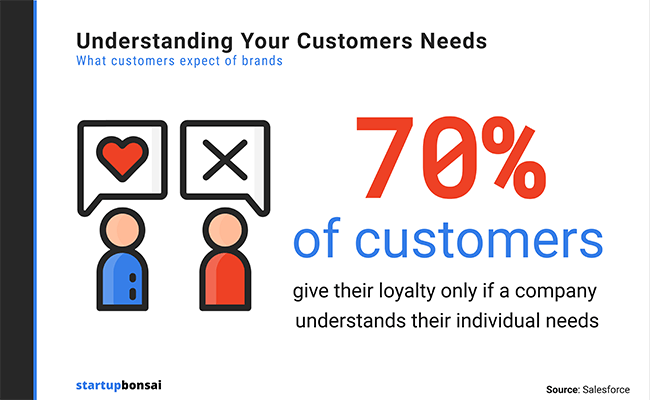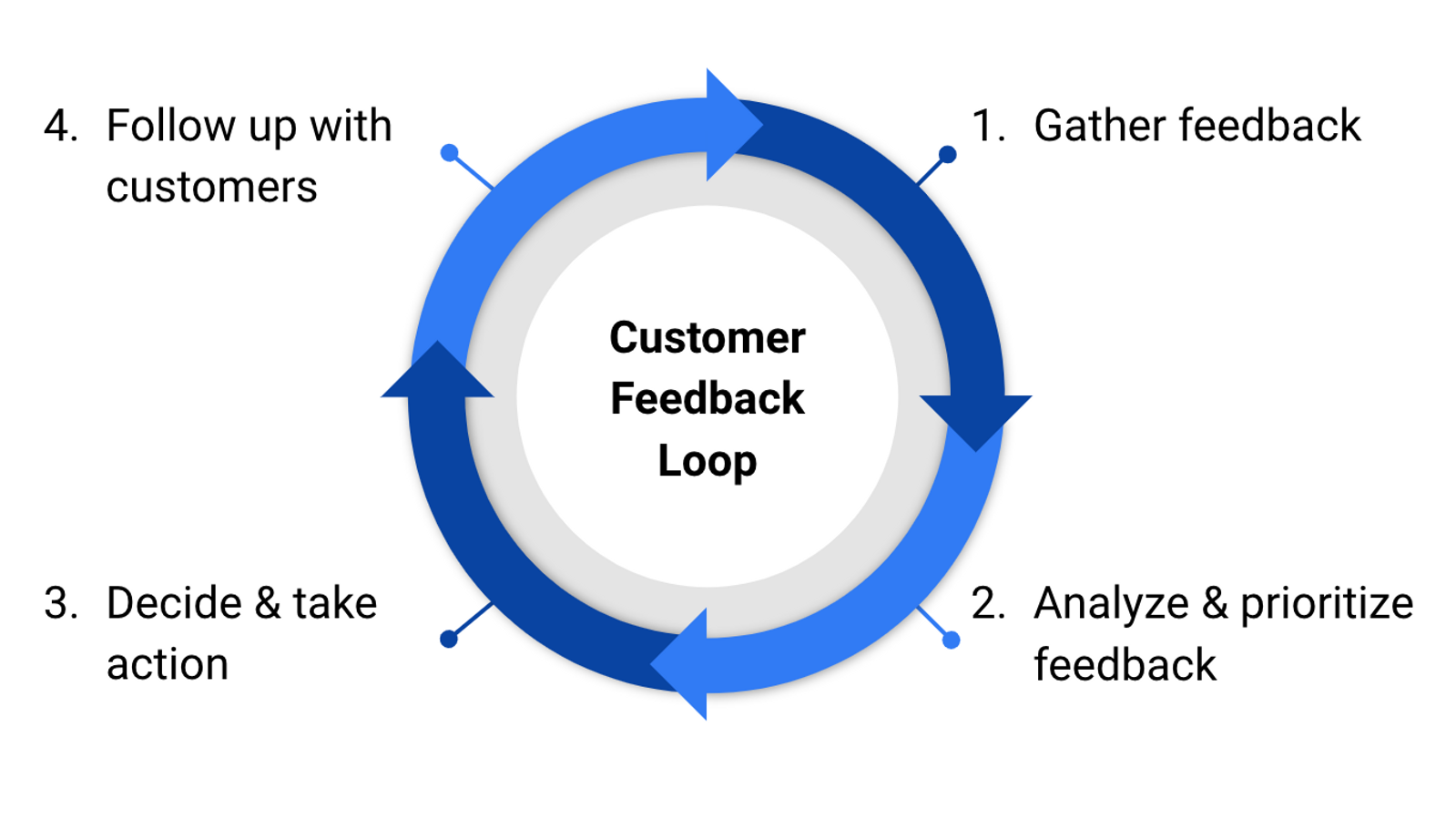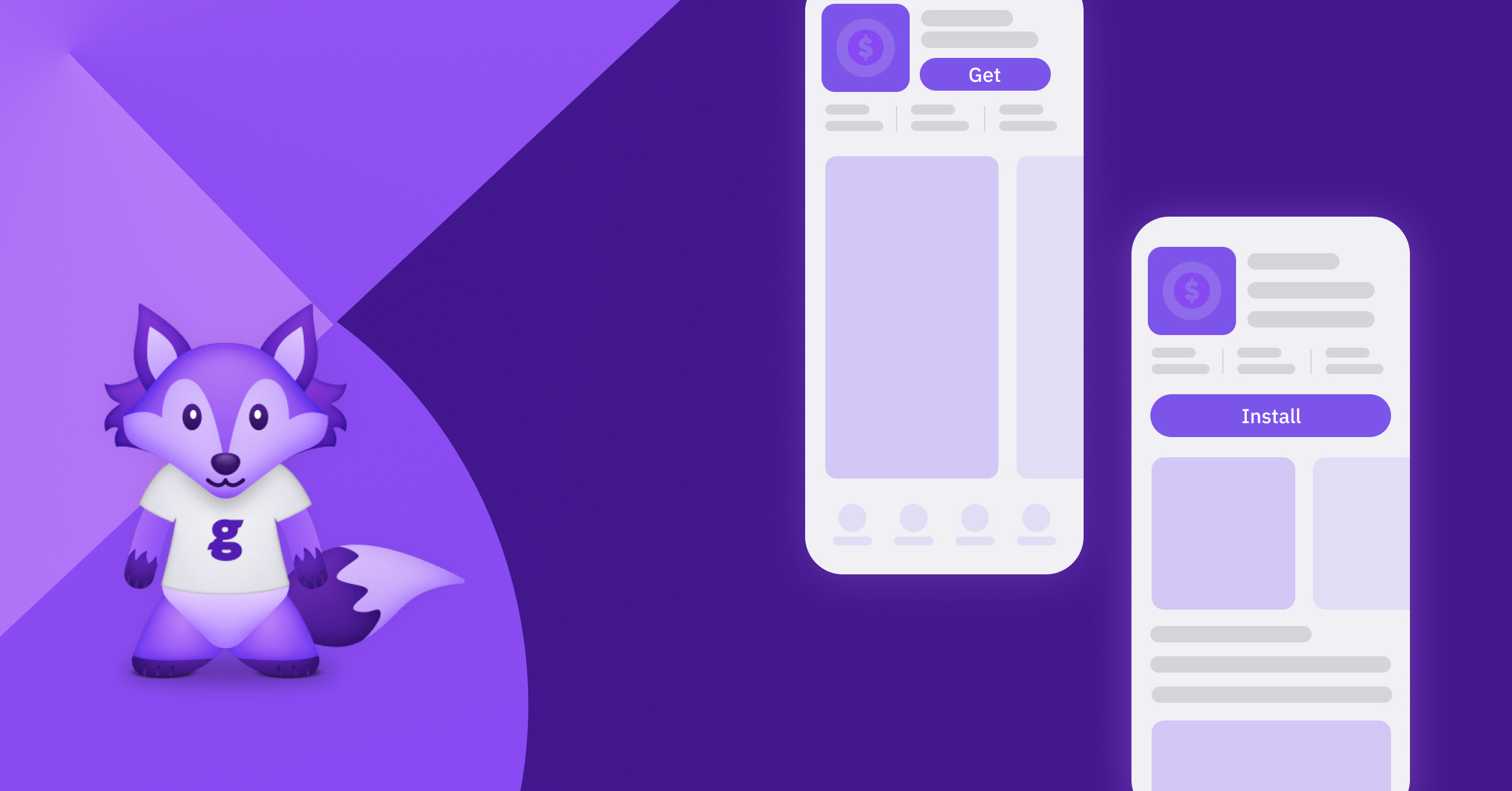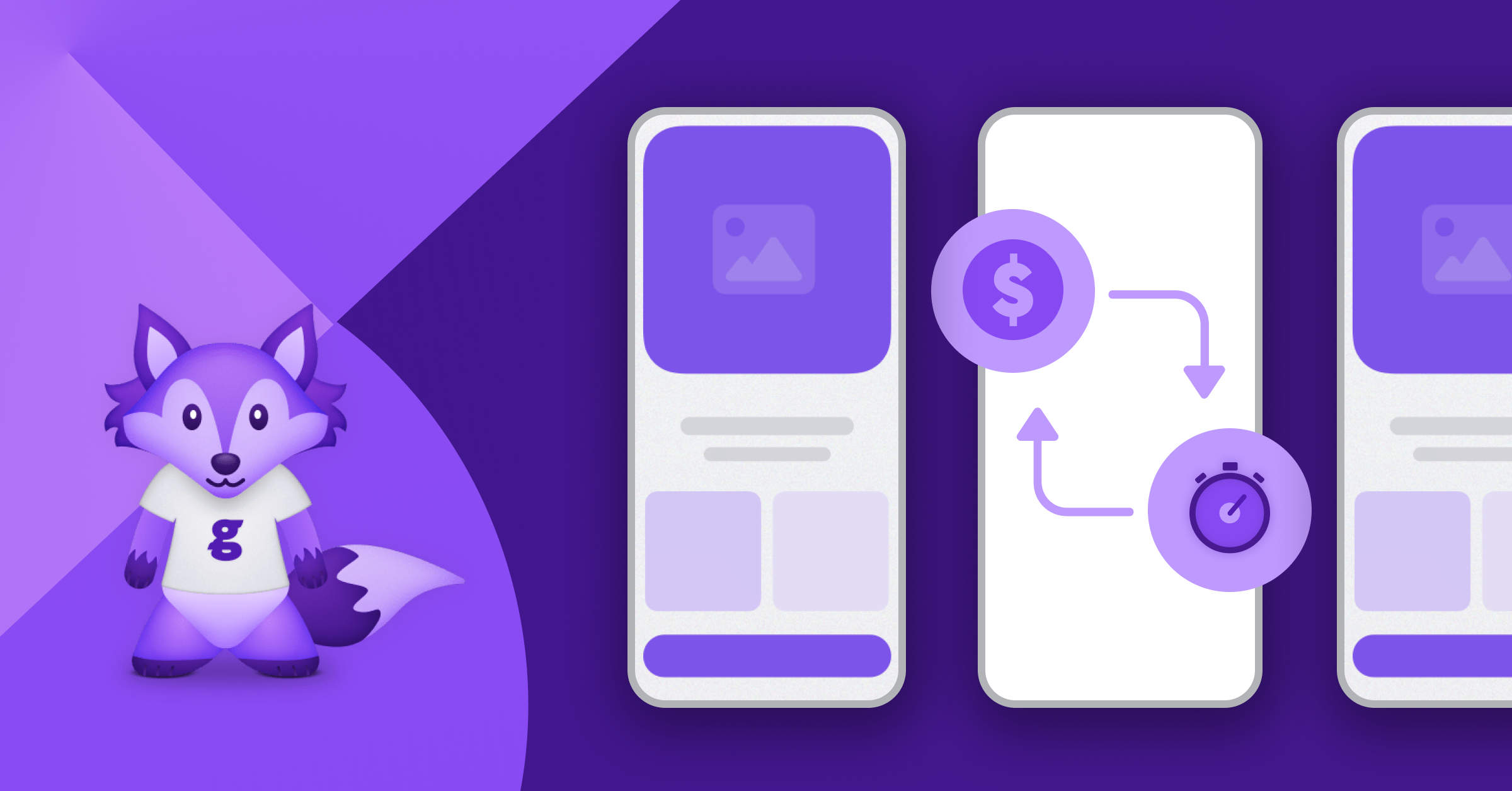Content
23 Best User Retention Strategies For Subscription Apps (Explained!)

Every business needs continuous patronage to guarantee an inflow of revenue. But acquiring new customers is getting more and more expensive. A cost-effective way to build a sustainable business is to turn existing customers into repeat buyers. But how do you do this? How do you make your existing customers repeat buyers?
The best customer retention strategies include:
1. Make onboarding simple and enjoyable
A simple and enjoyable onboarding helps leave a memorable first impression and sets the tone for a happy customer experience. Customer onboarding is the process new customers to your website go through to set up and begin using your product/ service.
If customers have difficulty getting started, only a few will push through to complete the sign-up and use the product, and fewer will return the next time.
So, having a simple and engaging customer onboarding process is essential to converting prospects and retaining them as customers.
Some ways to make customer onboarding simple and enjoyable include:
- Keep your sign-up process as short as possible: If you need a lot of information, split them over multiple pages instead of requesting everything in one long form.
- Keep onboarding engaging: Show sign-up progress with infographics, and include celebratory messages that excite and impress customers.
- Redirect customers to your site from welcome emails: Don’t make customers search through emails for log-in details, then manually enter these to log in to your product.
- Interactive at first log-in: When customers first sign up for your product, don’t make them guess. Instead, show them around by using getting started wizards, welcome pop-ups, etc.
(source: AppCues)
2. Utilize tools for managing customer relationships
Customer relationship management tools help you maintain an optimal record of your communication with each customer to provide you with information for better customer interactions toward forging more profitable relationships.
Your existing customers will happily return for more purchases when you have a good relationship with them.
Interestingly, customer relationship management (CRM) tools are designed to help you cultivate meaningful relationships with customers.
Specifically, CRM solutions allow businesses to store and manage all their customers’ data in one place.
When you have a central database comprising everything you know about your customers, you can leverage this information to improve customer interactions.
For example, when interacting with a customer, your support rep can quickly call up records from the CRM to understand the customer’s behavior and use this information to offer personalized and tailored interactions.
3. Provide a personalized customer experience
A personalized customer experience makes customers feel valued, and that feeling inspires brand loyalty. Personalizing customer experience means providing service tailored to an individual’s needs and preferences.
Simple ways to provide a personalized service include:
- Make offerings relevant to each individual: Offer solutions that are most useful in solving a customer’s particular problems.
- Leverage customer data in communication with them: Draw insight from customer data to provide meaningful conversations.
Know that no two individuals have the same exact needs and preferences.
A one-size-fits-all approach to service will alienate certain customers (especially those whose specific needs are not considered).
Providing personalized service also makes customers feel valued and increases their likelihood of returning for more purchases. In fact, 70% of customers say offering personalized services influences their loyalty.

(source: StartupBonsai)
4. Offer unique and superior products/ services
People keep returning to buy what holds value to them, so offering superior products is a magnet for attracting and keeping customers. A timeless strategy for retaining customers is offering products that are superior to your competition (at least, in the eyes of consumers).
When you offer a product/ service that is superior to every other in the market, your brand becomes a beacon of high-quality products, and consumers will keep coming back to you.
You can offer a unique and generous product/ service in many ways, including adding unique features, eliminating a bottleneck, removing knicks to make it easy to buy, etc.
You may also like: Top 10 Offer Ideas to Boost In-App Subscription.
5. Offer customer loyalty programs
Customer loyalty programs give customers more value over time than one-time buyers, encouraging them to return for more purchases.
Customer loyalty programs are marketing approaches that reward customers for their continued engagement with your brand. For this reason, they are also known as customer retention programs.
These programs offer discounts and other special incentives to customers returning for more patronage. Generally, the more the customer patronizes a brand, the greater their rewards.
Customers are more inclined to return for purchases when they know they’ll get special treatment for doing so. A customer loyalty program guarantees return buyers such special treatment.
Hence, loyalty programs help businesses retain customers.
6. Exceed customers’ expectations
Going the extra mile for your customers surprises and delights them, improving their perception of your brand and inspiring loyalty.
Exceeding expectations means delivering more than what the customers expect in a way that creates a positive and memorable impression.
If meeting customer expectations leads to happy customers, exceeding expectations leads to even happier customers.
Exceeding customer expectations tells them you care so much that you will go above and beyond to help them solve their problems.
When you exceed their expectations, your customers will feel appreciated and special, inspiring trust and brand loyalty.
Since customers have different needs and preferences, no single approach works for all customers.
However, anticipating customers’ needs can help you exceed their expectations. Some principles to help include personalizing communication, adding extra benefits, expressing gratitude, etc.
For example, a hotel may send a complimentary welcome note and a complimentary bottle of wine, a department store may give customers a smaller gift item, a car rental may upgrade a customer to a premium vehicle, etc.
7. Provide incentives before customers can terminate their membership
Incentivizing continued subscriptions adds more value to a package, giving customers more reasons to remain as subscribers when they would otherwise have canceled.
Thousands of users cancel subscriptions daily. Many users get ready to cancel their free trial, introductory pricing, or paid subscription before they are charged again.
Providing subscribers incentives just before they cancel can prevent them from canceling.
Some ways to provide incentives and avoid customer churning include:
- Discounts: Discounts give subscribers more value as they can enjoy the same service at a lower cost. This may encourage them to continue with the service instead of opting out.
- Extensions: Some users may be more willing to move to paid subscription if they have more time to try out a product/ service. Extensions allow you to give users more time over your regular free trial.
- Pause: For example, subscribers who are traveling may want to cancel a subscription. But if you offer them the option to pause the subscription when they’re away, they will resume receiving your products when they return. Thus, you avoid losing them completely as customers.
Simplify your in-app subscriptions with Glassfy. Start building for free!
You may also like: Maximizing App Trial Conversions
8. Provide swift delivery
It’d take some convincing for customers to return for more purchases if they were unsatisfied with your services during their first encounter with your business.
One of the main drivers of customer satisfaction in e-commerce is swift delivery.
In fact, about 46% of customers abandon their carts during checkout when they discover that they may have to wait longer for delivery.
Therefore, providing swift delivery is one way to ensure customer satisfaction and keep them coming back for more.
9. Provide simple return processes
Shoppers who had a good return experience are likelier to become repeat customers. It’s safe to say that a customer will not return for another purchase if the first purchase didn’t meet expectations when it was delivered but couldn’t be returned for a refund or replacement.
Online buyers do not get to physically inspect an item before buying it. So, there’s no guarantee that the item they will receive is what is represented. Customer returns provide this guarantee.
Customer returns allow online shoppers to return items that do not meet their expectations after receiving delivery.
When you offer returns, you are basically telling potential customers, “If you don’t like our product, you can return it to us, and we’ll replace it or refund you.”
A return process gives customers a feeling of security that they’ll not be trapped with an item they do not like. That security emboldens customers to return for more purchases.
Lastly, it’s not enough to offer customer returns. You should also make the return process as simple and pain-free as possible. Some ways to do this include:
- Have a transparent policy clearly explaining what can (and cannot) be returned.
- Offer free returns.
- Include a return label.
10. Establish a loop for gathering customer feedback
A customer feedback loop is a product/ service improvement strategy based on users’ suggestions and opinions. It involves soliciting customers’ feedback about your product/ service, acting on the feedback to improve the product/ service, and communicating improvements made to customers.

(source: Convas)
Establishing a loop for customer feedback increases customer satisfaction in two ways. Customer feedback helps you know how your customers feel, enabling you to make adjustments to make them happy so they can keep coming back for more. Secondly, it proves to them that they are important.
If you don’t know how your customer feels about your business, you won’t know what adjustments to make that’ll bring them the greatest joy. Gathering feedback from customers addresses this.
Instead of waiting for customers to come to you with their concerns, proactively solicit their opinion and feedback.
Ways to collect customer feedback include:
- Using suggestion boards/ boxes
- Running a survey
- Asking customers to participate in user testing or focus groups
- Using short in-app surveys
- Exit intent survey pop-ups
- Conducting customer interviews
After collecting customer feedback, analyze them and draw insights from them to improve aspects of your product or service.
To complete the loop, ensure you communicate “customer feedback-inspired” improvements to your customers.
Completing the loop in this way is important because it makes customers feel important. That feeling endears your brand to them, increasing their chances of returning to you for more purchases.
11. Be transparent
An often underappreciated way of retaining customers is being transparent. This is because customers feel more confident with brands that are transparent.
Transparency is more than a buzzword. It is a critical customer retention strategy because it helps build trust. Transparency means operating honestly so customers see and validate your business value.
Being transparent requires that businesses remain open about key points of information.
That is, you should provide honest information about points like business goals, history, operations, pricing, delivery timelines, etc.
Providing customers with everything they need to know about your products/ services gives them the feeling that you have nothing to hide.
This makes them trust you and feel more confident about interacting with your brand. Thus, being transparent helps you attract and retain customers.
Gain full visibility on your subscriptions with Glassfy’s real-time dashboards. Start building for free!
12. Empower customers with convenience
When the process of locating and getting your product/ service is convenient, customers are likelier to return for more purchases.
Generally, customers want a seamless shopping experience. No one wants to have a headache when making a purchase in an online store.
Consumers are getting busier and busier, so virtually everyone has less time to spend on a website when making a purchase.
In fact, a report in 2020 stated that 83% of consumers say convenience while shopping is more important to them now than five years ago.
Thus, offering a convenient shopping experience is critical to attracting and retaining customers.
Some ways to offer convenience include:
- Shorten the ordering process.
- Allow cross-device compatibility.
- Offer multiple payment options, and make the payment process straightforward.
Ready to reduce your time to market by 10x? Explore Glassfy’s platform now!
13. Deliver pleasant surprises
Delighting your customers with pleasant surprises helps you create an emotional connection with them, making them loyal to your brand.
Giving customers pleasant surprises is one of the most understated but effective customer retention strategies. Everyone loves a pleasant surprise - your customers included.
The rule of reciprocity explains how delighting customers with surprises turns them into loyal customers. The reciprocity rule states, “When others do something for us, we feel a strong need (or even a push) to return the favor.”
That is not to mean that delivering pleasant surprises gives customers a “forced obligation.” Instead, it generates positive emotions that make customers speak positively about your brand and make them keep coming back.
Some ways to deliver pleasant surprises to your customers include:
- Celebrate with them: Send a gift to your customer who is celebrating (a birthday, an anniversary, etc.). Acknowledging their special day will make them feel more special.
- Deliver personalized handwritten notes: Writing a special note to a customer can also make them feel recognized and valued.
- Offer service upgrades: Upgrade customers to a higher plan for a period, allowing them access to special features that others would pay for.
Pleasant surprises improve customer retention if you follow them with irresistible offers.
For example, a special birthday note comes with a discount coupon, a service upgrade comes with an option to enjoy the higher plan for a lower-than-regular fee, etc.
14. Apologize when you make mistakes
A sincere apology can appease customers, reassuring them that you value the relationship with them and are willing to go the extra mile to fix things.
Of course, you’ll try to avoid them, but mistakes happen in business. Mistakes come in different forms, including a billing error, a wrong or lost order, a data breach, etc.
Whatever form mistakes take, they create unhappy customers, reducing the likelihood of repeat business.
A sincere apology is an effective customer retention strategy because it goes a long way in mending a relationship broken by your mistake.
An apology works because it appeases angry customers. Know that customers will feel undone when your mistake hurts their experience.
Apologizing validates their reality and basically says to them, “Yes, your feelings make sense. We were wrong, and we take full responsibility.”
Admitting wrongdoing also tells customers that you value the relationship you have with them.
However, you should follow an apology with the steps you are taking to solve the particular problem.
For effective apologies that win back your customers’ trust, implement the following steps:
- Take full responsibility
- Empathize with customers
- Suggest an alternative solution (while the problem is getting fixed)
- Offer a realistic timeframe for when the problem will be fixed
15. Create educational content
Creating educational content improves your customer retention rate by helping customers understand how your products help them and establishing you as an expert that customers can turn to for valuable information.
First and foremost, customer education helps customers get the most out of our products/ services.
It educates customers about features and how these can help them. So, customers understand the product/ service better and are better equipped to derive optimal benefits from its use.
This increases customer retention because those that would’ve left for not quickly seeing the value of your product/ service will more readily remain with you.
Also, providing valuable content on industry-specific topics your customers care about will establish you as an expert in your niche.
Not only does this keep your customers engaged, but it also keeps you at the top of their minds, making them turn to you whenever they are ready to make purchases.
Some ways to create educational content for customer retention include:
- Make how-to articles and videos explaining how to use your products/ services
- Create a knowledge base with information about your product/ service
- Maintain a blog
- Maintain an email newsletter
16. Create a community around your product/ service
Creating a community around your product gives personality to your brand, makes customers identify with you, and increases interactions, fostering brand loyalty.
Establishing a community around your product involves creating online spaces for existing and prospective customers to have natural discussions and engagements.
These communities let you connect with your customers on a deeper level. You can easily demonstrate your values and ethics through your interactions in the community, giving personality to your brand.
Communities also let you demonstrate the value of your products to customers. They’ll better understand products and know how to extract maximum benefit from them.
Generally, the rich interactions in brand communities help grow your trust among customers, making them remain with you.
Some ways to create communities around your product to increase customer retention are:
- Create an open space for people to connect and have discussions (like a Facebook group).
- Rally around a social course. For example, if you sell clothing, encourage customers to share their favorite fashion looks and build each other’s self-esteem.
- Actively seek to solve people’s problems.
17. Provide a strong customer support
A strong customer support system helps you solve customer problems effectively, strengthening the relationship and driving loyalty.
Improving customer support systems is one of the most important customer retention strategies because it directly affects the customer experience.
Customer service is all about interacting with customers to provide them with the right level of support, both in pre and post-sale situations. This includes providing product information, resolving complaints, etc.
Excellent customer service solves customers’ problems, making it more likely for the customer to return after the initial purchase.
Thus, a strong support service increases the customer retention rate and improves customer lifetime value. In fact, 81% of customers say a positive customer service experience increases their likelihood of making another purchase.
Some ways to provide great customer service include:
- Active listening: Use active listening in customer interactions
- Personalize support: Tailor support to individual needs and preferences.
- Reduce response time: Don’t wait too long to respond to customers who submit support tickets.
18. Add social proof
Social proof adds credibility to your voice (advertisement) to reinforce trust in your brand. Social proof is the phenomenon that people copy and follow the actions of others to display “correct” or accepted behavior.
We see this in the business sphere when people are influenced to purchase a product after seeing positive reviews from real users. In fact, 84% of customers no longer trust brand-sponsored adverts but will instead trust the opinions of family, friends, and other consumers.
It’s clear to see that social proof helps in customer acquisition. However, most people do not realize that social proof can be used for customer retention.
After acquiring a customer, continuously exposing them to positive feedback can strengthen the confidence you built up to secure the initial purchase.
This keeps your current customers coming back for repeat purchases.
19. Reward loyal advocates
Rewarding loyal advocates is one of the best customer retention strategies because it helps you lock in customers from two fronts - the advocates and the referred customers.
Loyal advocates are customers who not only buy from you but also become enthusiastic promoters that recommend your products to others.
Rewarding advocates of your products make them feel appreciated, encouraging them to do more in their advocacy. Identifying people who recommend your products on social media and thanking them can be a big boost.
You can also give advocates tangible rewards via a referral program. For example, give customers a gift card for referring someone else who becomes a customer.
Rewarding advocates also help you lock in referred customers because people who trusted friends and family refer are likelier to be loyal customers. In fact, referred customers have a higher retention rate.
Thus, rewarding loyal advocates is an effective way to increase your customer retention rate from multiple fronts.
20. Stand for something
What you stand for as a brand connects you to your customers on an emotional level, and deep emotional connections foster brand loyalty.
Standing for something means taking a public stand on social issues. Taking a stand is important because virtually everyone stands for something these days.
More importantly, people gravitate towards brands with shared values. In fact, 64% of consumers who say they have a relationship with a brand attribute it to shared values.
Thus, not standing for anything can make customers ignore your company.
When people know your values and what you stand for, they feel connected with you emotionally. This emotional connection leads to continuous patronage because people generally put their money where their values are.
21. Constantly communicate with your customers
Good communication with your clients helps develop trust with your customers, improving the business-customer relationship toward increasing loyalty.
Speaking with your clients improves customer retention in different ways.
Open communication helps customers see you as transparent, increasing their trust in your brand.
Since trust is a major driver of loyalty, getting customers to trust you makes them more likely to keep using your product.
Client communication helps you improve customer expectations. By regularly updating customers about your operations and products, they know what to expect and are more likely to be satisfied with your products and services.
Satisfied customers are more likely to return for more purchases.
Client communication also helps you articulate customer needs, expectations, and challenges.
Communication is a two-way process that also involves listening to your customers.
This helps you determine their expectations and make necessary adjustments to address them. This leads to customer satisfaction and improves your repeat customer rate.
You can keep in touch with your customers via different channels. Email remains the most popular client communication tool. You should also leverage social media communication.
22. Leverage experiential marketing
Experiential marketing help create stronger connections with your customers, increasing the likelihood that they will engage with you. Experiential marketing involves inviting customers to interact with your products in real-life situations.
You provide fun and enjoyable experiences that help customers see the benefits of your products themselves.
People feel more connected to brands that offer this alternative marketing, increasing their likelihood of purchasing and becoming loyal customers.
In fact, 91% of people are more likely to purchase a product after participating in a brand experience, while 40% are more likely to be loyal afterward.
23. Use customer accounts
Using customer accounts shortens the order process (especially for return purchases), enhancing the customer experience.
A customer account is an account you establish for a customer to record their billing information, such as contact detail, payment details, etc.
Using a customer account gives customers instant access to pre-filled billing information.
Thus, customers do not have to fill out billing information when placing orders, making ordering easier.
Shortening the ordering process improves customer experience and makes them more likely to return for more purchases.
However, certain customers may see customer accounts as too big of a commitment and prefer to check out as a guest.
So, you should offer guest checkouts. Then, encourage using the customer accounts by incentivizing them.
Takeaway: Increase your customer retention rates today using the best user retention strategies
Wondering what makes customer retention important? Customer acquisition costs more than customer retention. So, a cost-effective way to build a sustainable business is to turn your existing customers into repeat buyers.
Discussed above are some of the best customer retention techniques. These customer retention strategies work in various ways, including making the customer feel important and valued, simplifying processes, providing exceptional service, and more.
Are you an Indie developer, a startup CEO, or a product manager looking to monetize your app and retain subscribers? Glassfy was made with you in mind.
Glassfy offers a Software Development kit (SDK) that allows developers and businesses to manage in-app subscriptions and payments across multiple platforms.
The service allows users to streamline tier in-app monetization strategies. Maximize your app’s revenue with Glassfy’s out-of-the-box growth tools. Start building for free now!
Read More





